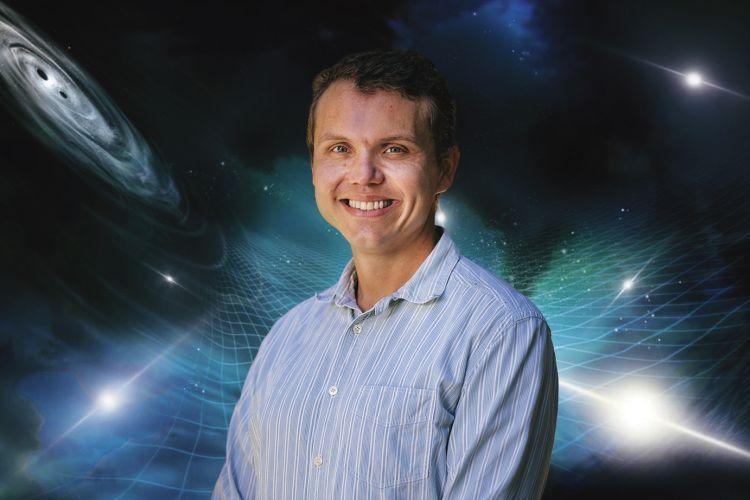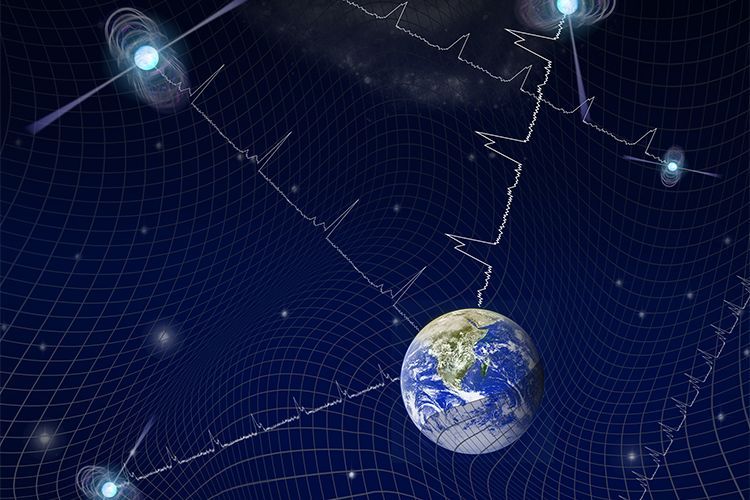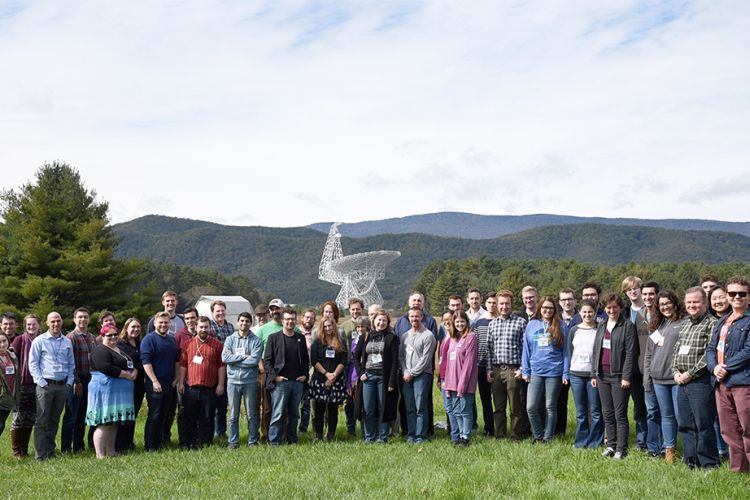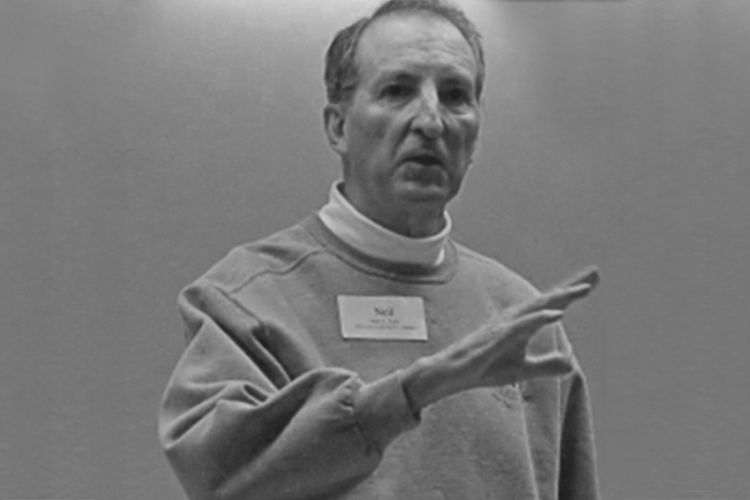Breadcrumb
Professor catching a groundbreaking wave of astronomy

Assistant Professor of Physics Dustin Madison
Gravitational waves. Millisecond pulsar clocks. Supermassive black holes. Ripples in the fabric of space.
These sound like issues more likely to be faced by Captains Kirk and Picard aboard the Starship Enterprise than by a professor at University of the Pacific.
But on June 29, Assistant Professor of Physics Dustin (“Dusty”) Madison was at the National Science Foundation in Washington, D.C. as data gathered and analyzed for more than 15 years by an international team of scientists—including Madison—was released with accompanying breakthrough results.
Peer organizations in Europe, India and Australia released similar work in a major cooperative international scientific effort.
Madison’s team, which goes by the name of NANOGrav, searches for gravitational waves in space, which were first postulated in 1915 by a rather notable scientist—Albert Einstein.
“Discussion about the phenomenon sounds like science fiction when it is really very much science fact,” Madison said. “Einstein was the first person to predict their existence. The best way to describe the waves is, simply, as ripples in the fabric of space.”

Illustration credit: NANOGrav/Sonoma State University/Aurore Simonnet. Artist's rendering of an array of millisecond pulsars in our galaxy being used to search for background of low-frequency gravitational waves permeating the universe.
NANOGrav, which was founded in 2007, stands for North American Nanohertz Observatory for Gravitational Waves. It has grown to more than 170 members. Madison has been with the organization since 2012 and is now one of eight elected to the leadership team.
A scientific collaboration called LIGO made the first detection of gravitational waves in 2015 for which it received the 2017 Nobel Prize in physics.
“We are the very next group after LIGO to see strong evidence for gravitational waves, but we are studying very different gravitational waves in a much different way,” Madison said. “This effort and these results will be a major high point of my career.”
Keeping time while exploring space
Madison and his colleagues track gravitational waves by utilizing a pulsar timing array. He says that pulsars are miracles of nature—exotic stars that enable astronomers to do very precise timekeeping throughout the galaxy. Gravitational waves make these stellar clocks do certain special things.
Currently, the collaboration monitors nearly 70 pulsars each month. Madison said the data was painstakingly collected over the past 15 years with some of the biggest radio telescopes in the world. Much of the data gathering has occurred at the Green Bank Observatory in rural West Virginia. The group also used the Arecibo Telescope in Puerto Rico before it collapsed on Dec. 1, 2020.
The group’s findings were published in a special edition of the Astrophysical Journal Letters.

(Photo credit: Tonia Klein/NANOGrav) Dustin Madison (far right) with NANOGrav Collaboration members at the Green Bank Observatory in West Virginia in 2018.
What is next for The North American Nanohertz Observatory for Gravitational Waves? Finding more information about the cause of the waves, Madison said.
“Nature is providing us with such a phenomenal laboratory,” Madison said. “What produces these waves? That is kind of an open question. We do not know for sure what is causing them. At the heart of every galaxy is what is called a supermassive black hole. Sometimes you get pairs of them that will orbit each other very closely … that is the most likely candidate for what produces the signal. Time will tell.”
Impressive work by Pacific astronomers
Madison’s work continues a remarkable streak of important faculty astronomy research at Pacific.
“We are seeing Pacific faculty involved in some very high-profile projects,” Madison said. “Daniel Jontof-Hutter in my department does world-class exoplanet science, which is a very hot field. Elisa Toloba has gathered data from some of the biggest and best telescopes in the world. And Guillermo Barro is doing important work on the James Webb Telescope, which has been a spectacular addition to the field.”
College of the Pacific Dean Lee Skinner lauds the impressive research conducted by Pacific faculty astronomers.
“Our faculty are on the leading edge of research in astronomy,” she said. “This is exciting not only for how they’re advancing our knowledge of the universe, but the opportunities that students at Pacific have to participate in these innovative research projects as research assistants, co-presenters at scientific conferences and even co-authors on important publications.”
Even high school students get to learn from these cutting-edge astronomers; 28 students in the Pacific High School Summer Institute enrolled in a course taught by the four astronomy faculty.
“We were able to go into detail with students about the types of research we are doing now,” Madison said. “It’s an exciting time to be in astronomy.”





